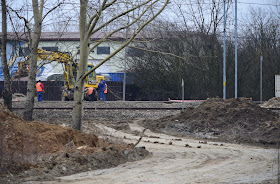Lent 2017: Day 31
The end of the first quarter of the year, the end of the first month of Lent (15 days to go). Focus now on the physical aspects - how's the fitness going? As I did this time last year, I'm making public my results. This is a particularly abstemious time of year, starting with a low-alcohol January followed soon after by the start of Lent. Hence those way, way below Prof Dame Sally Davies' new 14-unit guideline consumption scores.
Q1 2015
|
Q1 2016
|
Q1 2017
|
|
Paces walked (total)
|
991,162
|
1,025,422
|
1,044,542
|
Km (miles) walked
|
793 km
(489 miles) |
820 km
(506 miles) |
836 km
(516 miles) |
Paces walked (daily average)
|
11,013
|
11,268
|
11,605
|
Sit-ups (daily average)
|
122
|
155
|
113
|
Alcohol (units/week average)
|
8.8
|
11.5
|
10.6
|
Portions fruit & veg (daily average)
|
5.1
|
5.3
|
5.7
|
The progression in walking is clear, with the million-pace target cracked in two successive years.
Sit-ups were disappointing (something to do with me reading about the fallacy of spot fat-reduction - exercising the fat bits makes the muscle under them grow, but the fat itself does not burn off). Having said that, I've been doing far more other forms of exercise, with weights and press-ups to the fore, and chin-ups as well. So overall, the morning and evening exercise regime for Q1 2017 has been tougher than in previous years.
As was the case last year, it's been a winter quarter in which I didn't come down with a cold or flu. Let me repeat the words I wrote this time last year:
Whenever I felt THE VERY FIRST symptoms of a cold creeping up on me – that slight tickling on the roof of the soft palate – I determined the cold away, by visualising those nasty viruses, little round spiky balls, then blasting them away with killer thoughts like a fire extinguisher. Several seconds in which I wished them gone, focusing my entire being on getting rid of them – and I'd wake up the following morning with no symptoms whatever... Too early to say that this is wishful thinking, but I'm convinced that mind-over-matter has worked here.Well, a year on, this still holds true. Mind over matter, coincidence, wishful thinking or some other form of cognitive bias? Or just a dwindling number of cold viruses (you only get one a lifetime, whereafter you're immune to that strain) that I haven't yet has as I get older?
This time four years ago:
Cycling to work - the new season begins
This time seven years ago:
Five weeks into Lent















































